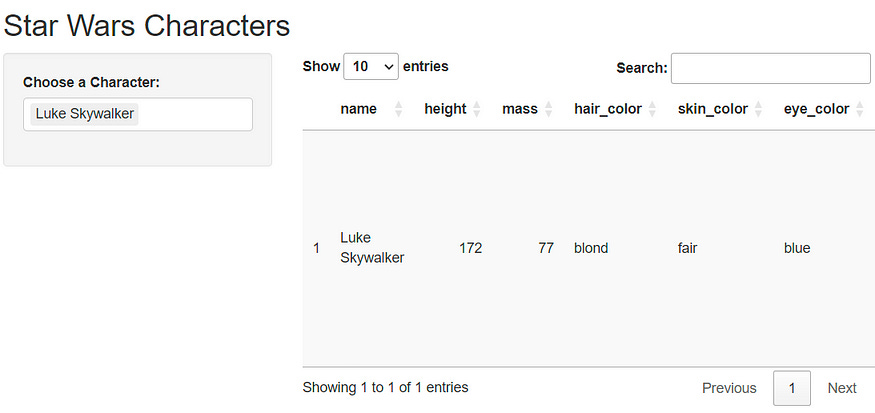How to Customize the Layout of your Shiny Apps
Learn how to control the layout of Shiny apps and improve how their look
Would you like to know how to fully customize the layout of your R shiny web applications in a easy way?
Today you will learn how to:
create a simple R Shiny User Interface (UI) Layout;
how to add a sidebar with inputs;
add multiple rows, columns, tabs and pages in R Shiny;
add a theme and fully customize colors and fonts;
and more…
Watch the video:
Load R packages
Before we begin, make sure you have the required packages installed:
install.packages(c("shiny", "tidyverse", "gt", "bslib"))Single Page Layout with Sidebar
Let’s start with the most common Shiny layout pattern - a sidebar layout. This creates a clean interface with controls on the left and main content on the right.
library(shiny)
library(tidyverse)
library(gt)
ui <- fluidPage(
titlePanel("Starwars Dashboard"),
sidebarLayout(
sidebarPanel(
selectInput(
inputId = "character",
label = "Choose a Character:",
choices = unique(starwars$name),
selected = unique(starwars$name)[1],
multiple = TRUE
)
),
mainPanel(
gt::gt_output("characterInfos")
)
)
)
server <- function(input, output) {
output$characterInfos <- gt::render_gt({
dplyr::starwars %>%
filter(name %in% input$character) %>%
gt() %>%
opt_interactive()
})
}
shinyApp(ui = ui, server = server)This layout demonstrates the fundamental structure of a Shiny application:
sidebarPanel: Contains input controls (in this case, a character selector)mainPanel: Displays the main content (an interactive table)Reactive filtering: The table updates automatically based on user selection
The sidebar layout is responsive and automatically adapts to different screen sizes, making it mobile-friendly.
Multi-Row Layouts with Grid System
For more complex interfaces, you’ll need precise control over element positioning. Shiny uses Bootstrap’s 12-column grid system, allowing you to create custom layouts with multiple rows and columns.



